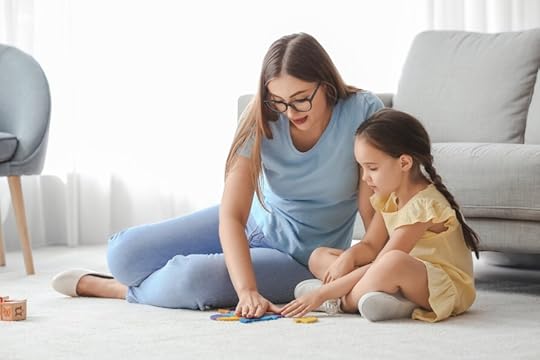Creating a Nurturing Home Environment for an Autistic Child

Caring for a child with autism means making a home that helps them grow, communicate, and feel emotionally safe. Every child with autism is unique, and their needs can vary greatly.
Understanding Autism Spectrum Disorder (ASD)A spectrum of developmental disorders known as autism spectrum disorder (ASD) affects how people interact with others, communicate, and behave, often involving repetitive actions. While the spectrum is broad, children with ASD often experience sensory sensitivities, difficulties in managing emotions, and unique learning needs.
Understanding these factors helps shape the decisions around creating a comfortable and accommodating home. In addition to home arrangements, common treatments for autism include interventions like ABA therapy, speech or occupational therapy, and others.
A child’s communication skills, emotional regulation, and independence can be significantly improved with a regulated home and consistent therapies.
Structured and Predictable RoutinesConsistency is Key: For many children with autism, predictability and routine are essential for their sense of security. Routines help reduce anxiety and stress by providing structure to their day. We recommend creating daily schedules and visual timetables to help the child understand what to expect.
Tools to Create Routines:
Visual Schedules: Use pictures or icons to create a daily schedule. This could include meal times, therapy sessions, playtime, and bedtime.Timers: For transitions between activities, visual or sound timers can be helpful in easing shifts and providing a warning of upcoming changes.Sensory-Friendly SpacesA common trait of autistic children is heightened sensitivity to light, sound, textures, and odors. Designing a sensory-friendly environment significantly impacts their comfort and well-being.
Creating a Sensory Room
A designated sensory room or corner can serve as a calming retreat for your child when they feel overwhelmed. It should include:
Soft Lighting: Avoid harsh, bright lights. Use dimmable or natural light where possible.Textured Toys and Materials: Provide items with various textures, such as soft blankets, sensory balls, or fidget toys.White Noise or Relaxing Music: Calming background noise can help block out overwhelming sounds from the environment.Weighted Blankets or Vests: These can help provide deep pressure that many children with autism find comforting.Reducing Sensory Overload in Common Areas
Declutter: Too much visual stimulation can be overwhelming. Keep spaces clean and uncluttered.Noise Reduction: Use rugs, curtains, and soft furniture to absorb sound. Noise-cancelling headphones may also be helpful during louder activities.Temperature and Smell: Be mindful of strong smells or temperature fluctuations, as children with ASD can be sensitive to these elements.Encouraging Communication and Social InteractionWhile children with autism may experience challenges with verbal communication, various strategies and tools can be implemented to support their interaction with family members and peers.
Augmentative and Alternative Communication (AAC)
For non-verbal children or those with limited speech, AAC tools like communication boards or apps can help express their needs. These may include:
Picture Exchange Communication System (PECS): This allows children to communicate using images or symbols.Speech-generating devices (SGDs): Apps on tablets or specialized devices that speak for the child when they select words or images.Promoting Social Skills at Home
Role-playing Scenarios: Practice common social interactions through role-playing. For example, role-play how to greet someone or ask for help.Structured Playdates: Invite other children for short, structured playdates, focusing on specific activities where your child can practice sharing, turn-taking, or teamwork.Developing Emotional Regulation StrategiesEmotional regulation can be particularly challenging for children with ASD, especially during overwhelming or frustrating situations. Developing personalized strategies for calm ng and self-soothing is crucial.
Calm-Down Kits
Create a calm-down kit that the child can access when they feel overwhelmed. This might include:
Fidget toys: To channel nervous energy.Stress balls: For squeezing to release tension.Noise-cancelling headphones: To reduce auditory stimuli.A favorite book or soft toy: Something familiar and comforting.Teaching Breathing and Relaxation Techniques
Simple mindfulness exercises, such as deep breathing, can help your child learn to calm down when upset. Practice these during calm moments so that they become familiar when needed.
Encouraging Independence Through AdaptationsWhile providing support, it is equally important to encourage independence where possible. Small adaptations in the home can foster self-sufficiency in daily tasks.
Adapted Bathrooms for Independence
Visual Instructions: Place step-by-step instructions for hygiene routines near the sink or shower.Supportive Equipment: Install grab bars or non-slip mats to ensure safety and make it easier for your child to perform tasks on their own.Cooking and Meal Times
Simplify Mealtime: Offer visual recipe cards to make following a meal preparation routine easier.Safe Equipment: Use child-safe kitchen tools like blunt knives and cool-touch cooking devices.Personalized Bedroom Spaces
Allow your child to participate in designing their bedroom. Providing choices, like selecting bedding or organizing their toys, gives them a sense of control and comfort in their personal space.
Collaborative Care and Continuous LearningIt’s essential to involve all caregivers, family members, and therapists in shaping a supportive home environment. Regular communication and collaboration with professionals, including occupational therapists, speech therapists, and educators, are invaluable in tailoring your home to meet your child’s evolving needs.
Final ThoughtsCreating a home environment that nurtures an autistic child requires intentional planning, an understanding of the child’s unique needs, and flexibility to adapt as they grow. By focusing on sensory-friendly spaces, promoting communication, and fostering independence, we can provide a loving and supportive foundation that allows them to thrive.
Continuously seeking professional advice from trusted institutions like Move Up ABA, learning new techniques, and adjusting routines will further support your child’s growth and development.
The post Creating a Nurturing Home Environment for an Autistic Child appeared first on Geek Mamas .



